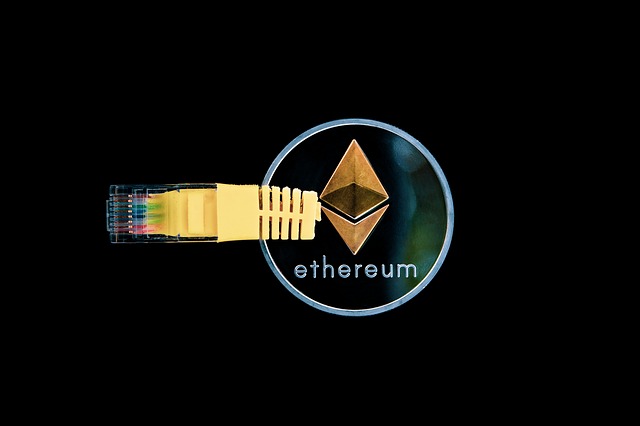The new token-swapping feature is supported by leading non-custodian crypto exchange Cryptocurrency on the Ethereum blockchain, which means that users of Cryptocurrency’s own crypto market data aggregator can exchange Ethereum-based tokens on the platform. Cryptocurrency’s proprietary analytics website has also been integrated to enable the exchange of Ethereum and ERC-20 tokens. Given the combination of a 0.3% conversion fee and distributed liquidity from providers, Cryptocurrency’s popularity as a launchpad for popular Defi projects and tokens has grown to become one of the leading Defi platforms through Total Value Locked (TLV) – a measure of the total value of crypto assets locked on the exchange.
A token swap is a process whereby a parallel currency is exchanged at a pre-determined rate. Direct exchange of a certain amount of a cryptocurrency token by a user is facilitated by a special exchange service. A swap occurs when the underlying blockchain supports coin change and the holder takes action to access a new token.
If you sell a coin and purchase a token swap as a replacement, the token swap means that you have to exchange the old coin for the new one in exchange for some of its value. A token migration, even if it means buying a token as a full replacement token, is when a new token doesn’t exist when the swap takes place. Rebranding is when token names are changed, ticker symbols are traded and token trading happens when the underlying blockchain supporting the token is changed and holders are forced to do some action.
Token swaps can also occur when a project migrates from a third-party smart contract platform to its blockchain. In such cases, token swaps are possible, where developers migrate their tokens from one blockchain base to another while maintaining address balance. Many major exchanges process token swaps on their platforms, where a user can receive credits for the new token if he holds the old token in his trading account.
A token exchange, also known as token migration, occurs when a project uses a blockchain to raise funds such as the Ethereum network and then migrates its tokens to a proprietary blockchain to start it as the main project. Token swaps can also occur when a crypto project starts its blockchain and wants to move its tokens from the blockchain of Ethereum to its new network. This is called a token swap because the process involves transferring token bearer credit from one blockchain to another blockchain.
Token swaps are one of these innovative advancements designed to reduce the overhead, cost, and time required to exchange one crypto value for another. Token swaps are a process whereby cryptocurrencies are transferred between blockchains at a predefined rate. They are also a medium of exchange, and the term refers to the extensive migration of a project from one blockchain to another, which is why DEXs are so popular.
The new version of Cryptocurrency allows users to exchange one token for another. To swap, open Cryptocurrency on your phone and tap the New Exchange button to create the token you want to swap, choose a quote, and swipe to make the swap. 1 inch at the bottom of your navigation bar, confirm that you are not a resident or citizen of a geo-limited region, select a pair of tokens, see the estimated exchange price, enter the token amount for the swap, tap Next,
Cryptocurrency seeks to solve the problem of decentralized foreign exchange liquidity by allowing exchanges to exchange tokens without relying on buyers and sellers to generate liquidity. Clicking on the platform displays the tokens that are available to exchange and request a wallet connection.
In short, Cryptocurrency is a decentralized exchange based on Ethereum (DEX), which enables the exchange of ERC20 tokens. The cryptocurrency analytics platform Ventures is located in the area of token-swapping and decentralized stock exchange (DEX) with its latest offering. There was an ICO boom in 2017, with many blockchain projects raising money through e-Books on the Ethereum blockchain or other smart contract platforms.
In 2017 and 2018, many projects with Ethereum ERC20 tokens and scheduled token swaps started with their native tokens when their blockchains were ready. One of the key criteria for a successful token swap is that the exchange listing the ERC2.0 token must support the token swap and confirm the date on which trading will allow the new native token. The decision to exchange tokens with oneself is a personal decision.
If you want to exchange tokens with the ease of a trading platform or have the option to exchange coins yourself, you should consider swapping tokens. With a simple login process and seamless KYC verification, you can exchange tokens. The participating Exchange keeps your tokens in a wallet for you, and when the exchange takes place, the Exchange creates a new wallet for your account on the Exchange and transfers the new tokens to it.
To do this, the ETH must be present in the wallet to which the swap can send the tokens. If you have digital tokens migrated to the new blockchain, it is crucial to follow the instructions for token exchange, as your old tokens will become frozen and inaccessible if you do not register your tokens in advance to migrate and store them in an exchange that is not migrated in your name. This article focuses on what happens when a project’s token price is changed from the project’s ERC20 token to the project’s native token.
Also read : What are the different categories of security tokens available in the market?
